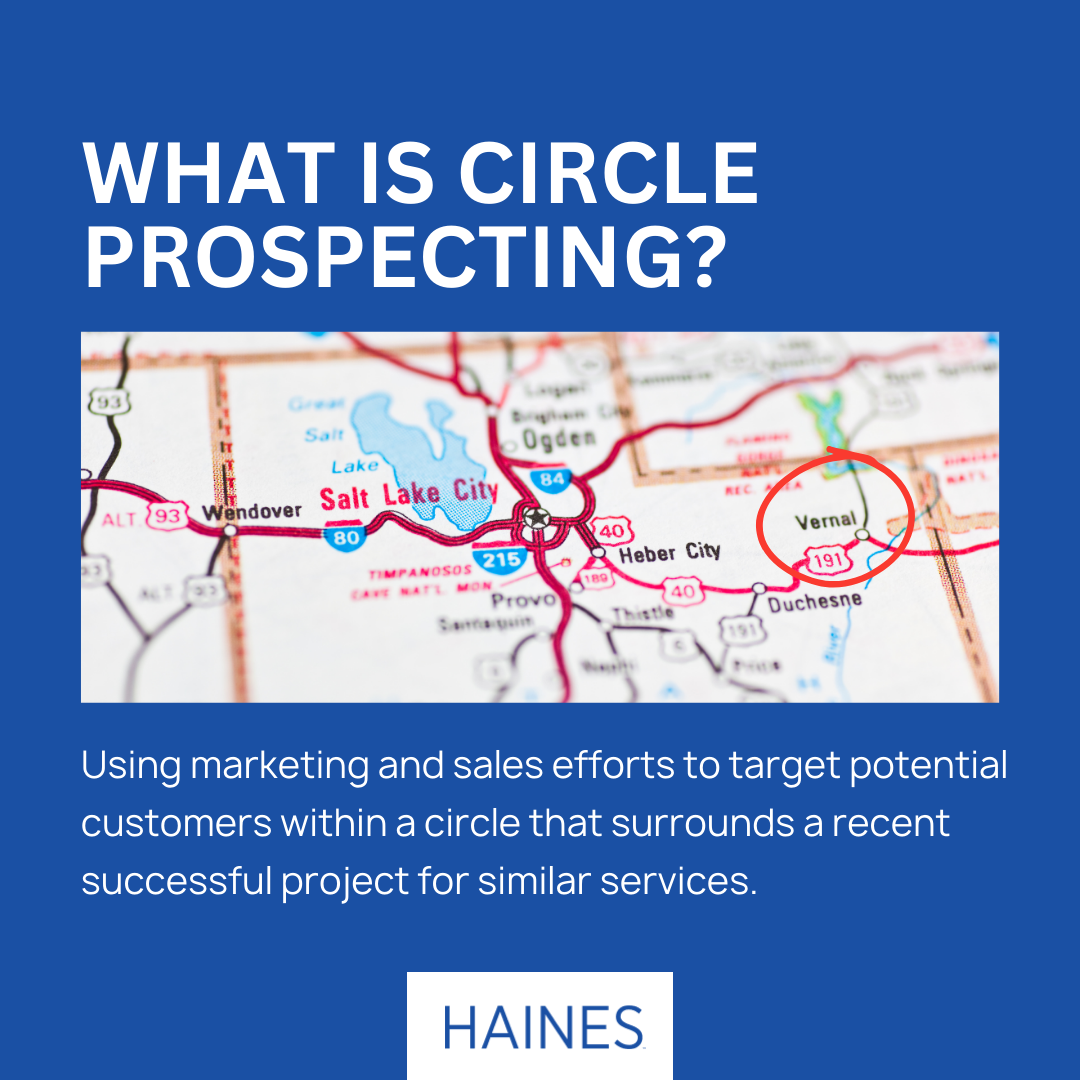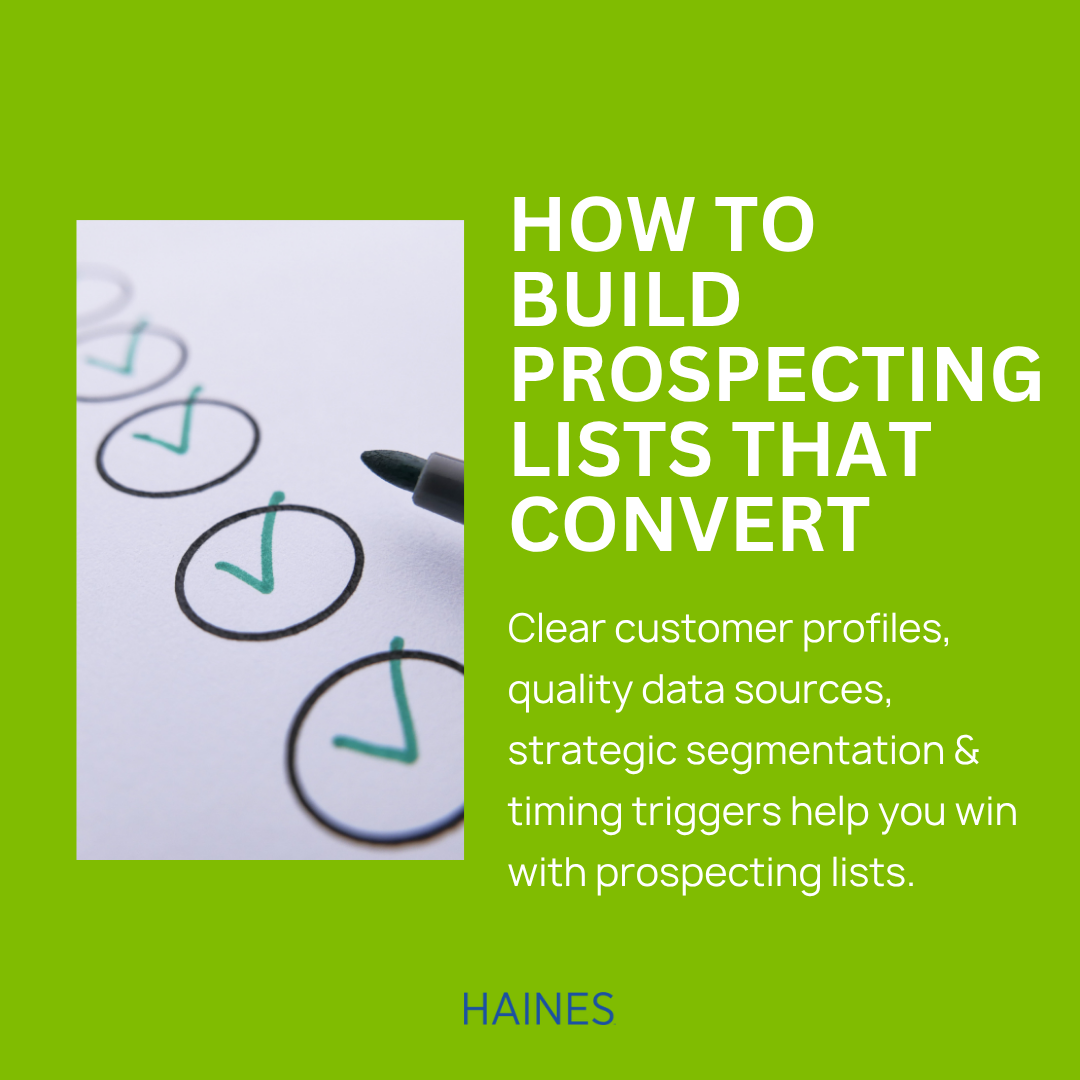We get a lot of questions about the best methods for generating leads in the real estate space — and for good reason. At Haines, our advanced software has helped thousands of businesses, contractors, and real estate agents build client lists and generate new opportunities. However, this doesn’t mean that anyone should just use one lead generation tool or methodology and leave the rest up to fate. We believe in implementing a variety of effective strategies to guarantee lucrative long-term results. This includes circle prospecting.
In today’s guide, we’re going to take a closer look at circle prospecting, explain how it works, its average conversion rates, and how you can implement it as part of your lead generation strategy. So, let’s get started!
What Is Circle Prospecting?
Circle prospecting is aptly named. It requires you to look at a successful building project or sale you recently completed. Then, examine the homes and businesses in the surrounding area. More specifically, you’ll want to draw a circle to include all relevant properties around your last successful project. You may not have to literally draw a circle, but you should set a boundary so that you know which properties to include and, just as importantly, which ones to exclude.
Once you’ve drawn your circle, you can begin reaching out to property owners in the area to see if they’re interested in similar services. We recommend using a few different marketing and sales tactics together to make the most of our your circle prospecting efforts:
- Direct Mail – If you use a tool like Haines’s Criss Cross, you’ll be able to draw your boundaries and export a list of all the addresses within that area. You can even filter down by specific property characteristics or information about the homeowners. We recommend sending out targeted mailers and personalizing your message as much as you can.
- Social Media Advertising – With Criss Cross, we don’t charge any extra skip tracing fees, so you can pull email addresses and phone numbers for individuals living in your chosen areas. By uploading these lists to social media platforms, you can target these individuals with paid advertising to get your name in front of them as they browse their favorite apps.
- Filling an Auto Dialer – Once you have your targeted list of phone numbers, it’s time to combine sales techniques with marketing ones. So if you’re sending direct mail, running social media advertising, and more, make sure you take the opportunity to directly reach out to the people seeing your name and your brand to make a direct connection.
Whether you’re looking for buyers, sellers, or properties in need of renovation, you can use circle prospecting to work from past successes. It’s essentially a way to use geographic location to your advantage when generating new leads.
You can even use some advanced techniques along with circle prospecting for better results with Criss Cross by Haines. For example, take the area near a finished project and then apply some of the following filters:
- Use Age + Length of Residency to target older residents who are looking to downsize
- Search for Renters as first-time home buyers
- Find older homes, based on Year Built, that may need renovations
Circle Prospecting Conversion Rates in Real Estate
Does circle prospecting really work? Based on estimates from some of the top real estate firms in the country, circle prospecting results in conversion rates of roughly 2%, which is slightly lower than average conversion rates in the real estate industry. This means for every 50 homeowners you contact within the circle, you’re likely to convert just one into a successful appointment or sale. This is relatively low because circle prospecting does not, in itself, account for a lot of factors that can increase or decrease conversion rates.
This is why we recommend combining circle prospecting with other research methods to narrow down your choices further. For example, you might draw a circle around a recent home sale that encompasses roughly 400 other homes. From there, you’ll want to do research to find homeowners whose demographics, needs, interests, and assets align more closely with those of your most recent client. This will ensure that you don’t waste time calling prospects who share nothing with your recent client other than a zip code.
How to Generate Leads With Circle Prospecting
Circle prospecting is just one simple way to generate leads — but it can’t guarantee good leads on its own. You need to implement additional strategies to learn about property owners in the area and find the ones who are most likely to be interested in buying, selling, or engaging with your business in another way. Fortunately, Haines can help. We have nearly a century of experience in the real estate space, and we use the latest software and strategies to ensure that your business doesn’t waste time chasing down bad leads.
Looking for more expert advice on circle prospecting? Need software that can help you or your business generate leads? If so, reach out to us at Haines to learn more and get ahead of the competition.
About the Author

Ashley Williams
Since 1932, Haines has been publishing the original Criss Cross directory. Now, instead of a giant book, we deliver the same great information in a digital format. We are a family-owned, certified women-owned business led by me as our first female, fourth-generation CEO. Our Criss+Cross Directory is nationally recognized for delivering essential residential and property data. We serve diverse clients — from government agencies to real estate professionals, mortgage companies, investors, contractors, and more
Want to Get More Tips from Haines? Subscribe to Our Blog
Recent Posts
Testimonials













